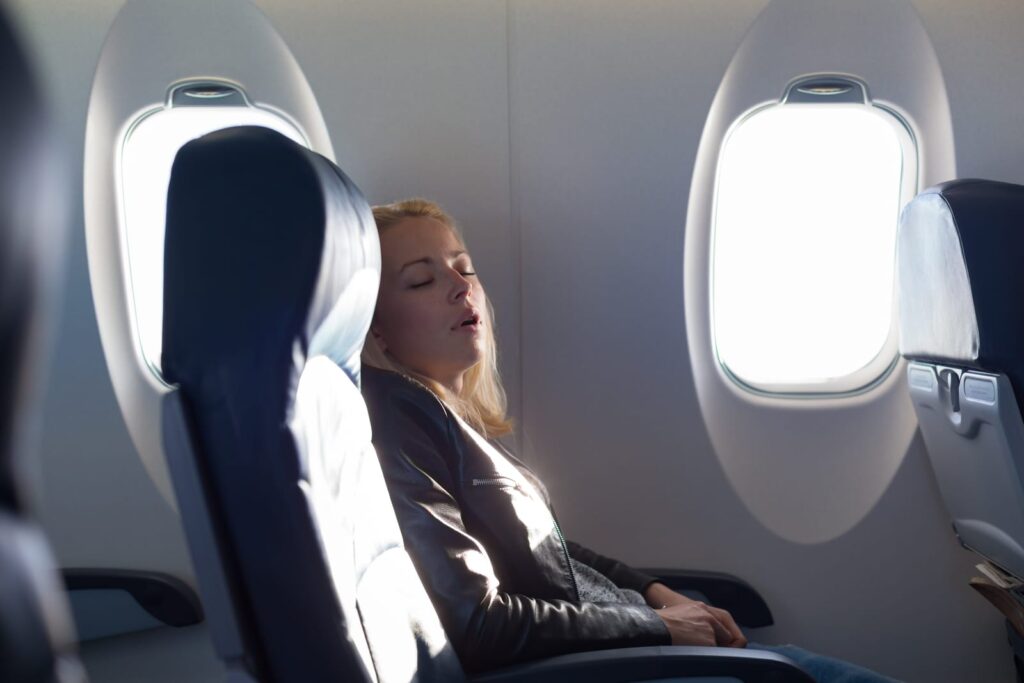Etiquette & Perspectives
You’ve probably been there: you finally settle into your airplane seat, and the person in front of you suddenly leans back. Now your knees are squished, and your already tiny space feels even smaller.
Or maybe you’re the one eyeing that recline button, worried you’ll annoy the passenger behind. This little dilemma has sparked all sorts of debates, not to mention a few viral videos of angry travelers.
Whether it’s rude or not? That depends on stuff like flight length, time of day, and just basic courtesy. Sure, airplane seats are made to recline, but using that feature takes a little judgment and a bit of empathy for the folks around you.
Short domestic flights – think under five hours – usually call for keeping your seat upright. On longer international flights, most people are a bit more forgiving if you lean back.
Is It Rude to Recline Seat on Airplane?
People can’t seem to agree on this. Some say reclining isn’t rude by itself, but how and when you do it can make all the difference.

Common Passenger Opinions
Travelers seem split into two camps about reclining. One group figures, “Hey, I paid for the seat, so I should get to use all its features.”
Others feel pretty strongly that reclining in economy is inconsiderate, tight spaces mean someone else pays the price for your comfort.
There’s also a middle ground. Some folks say it’s fine to recline on long flights, but not on quick domestic hops.
Reddit threads are full of mixed feelings:
- Long-haul flights: Most people shrug and accept reclining
- Short flights: Lots of folks think it’s unnecessary
- Red-eye flights: Reclining’s basically expected
Personal experience shapes these views a lot. Tall passengers, in particular, often dread the seat in front suddenly coming back.
Impact on Passenger Comfort
When you recline, the person behind you loses knee space fast. If they’re working on a laptop, good luck, it probably won’t open all the way anymore.
Eating gets awkward, too. Tray tables tilt, and suddenly cutting food or sipping a drink is a balancing act.
Even getting up to use the bathroom turns into a challenge with a reclined seat blocking the way.
Tall travelers? Their knees might end up jammed into the seatback. It’s not great.
But reclining does have perks for you:
- It’s easier to sleep, especially on long flights
- Your back might thank you for the change in angle
- Red-eye flights feel a bit more bearable
Airline Policy Guidance
Most airlines let you recline, it’s part of the seat design. Typically, you get about 2-4 inches of movement from upright.
Flight attendants usually stay out of seat-reclining squabbles. They’ll remind you it’s allowed, but they hope you’ll be considerate.
Some airlines, especially budget ones like Spirit or Ryanair, have ditched reclining seats altogether on certain planes.
Premium economy and business class offer more room, so reclining there rarely sparks conflict.
Official etiquette rules? Not really. Airlines leave it up to you to decide what’s reasonable.
Expert and Industry Insights
Etiquette experts generally say it’s okay to recline – with a few conditions. They urge you to check behind you first and to move your seat back slowly, not all at once.
Flight attendants recommend a quick glance before you recline. If the person behind you is eating or hunched over a laptop, maybe hold off.
Travel pros say timing matters. Don’t recline during meal service or when folks are clearly busy with their devices.
Some etiquette specialists just say skip reclining in economy altogether, arguing that modern seat layouts make it too disruptive.
At the end of the day, it’s about being considerate. Your right to recline shouldn’t outweigh someone else’s comfort.
Best Practices for Airplane Seat Reclining
If you want to recline without drama, timing and communication are everything.
When and How to Recline Respectfully
Before you lean back, check what the person behind you is doing. If they’re eating or typing, maybe wait a bit.
Don’t just slam the seat back – move it slowly so they have time to adjust or move their stuff.
Long-haul flights (over three hours) are the best time to recline. For short flights under two hours, it’s usually not needed.
Try not to recline during meal service. Wait until the trays are cleared before you get comfy.
Red-eye and overnight international flights? Most people expect you’ll recline, so go for it.
Communicating With Fellow Passengers
On short flights, it’s nice to ask before you recline. A quick “Do you mind if I recline?” goes a long way.
Eye contact and a polite tone help. Most folks appreciate the heads-up.
If someone asks you not to recline, try to work with them. Maybe they’re tall or deep into a work project.
If you really need to recline for medical reasons or serious discomfort, let the person behind you know. Most people will understand if you explain.
Handling Reclining Conflicts
If someone objects to your reclining, try to stay calm. Listen to what they’re saying and see if you can find a compromise.
Maybe just recline your seat partway instead of all the way back. That way, you get a bit of comfort, and they still have some space.
If the conversation goes nowhere, just call a flight attendant. They’re there to help and usually know how to deal with these awkward moments.
Don’t get into a seat war by constantly reclining and un-reclining, or by kicking the seat in front of you. That’s just going to make things worse for everyone.









